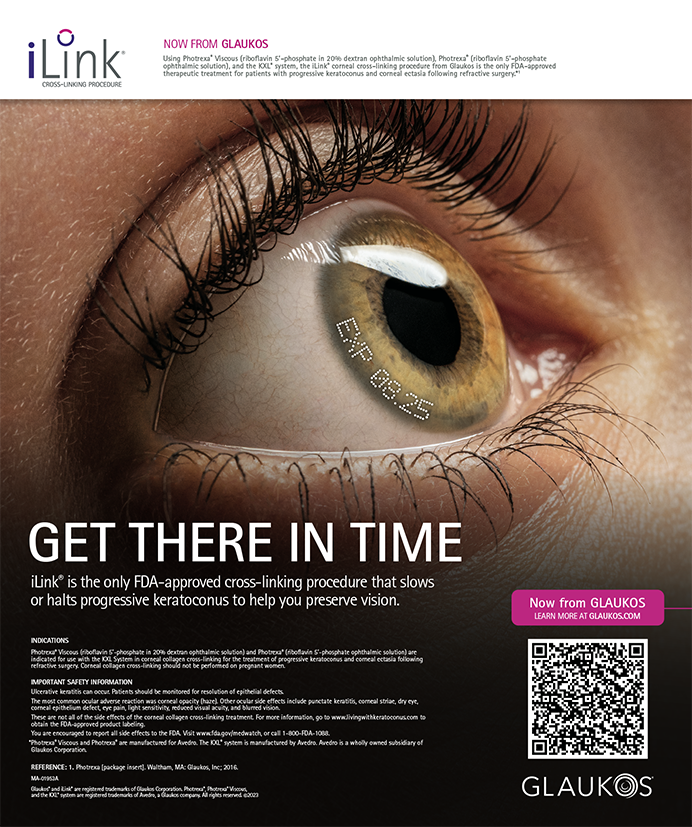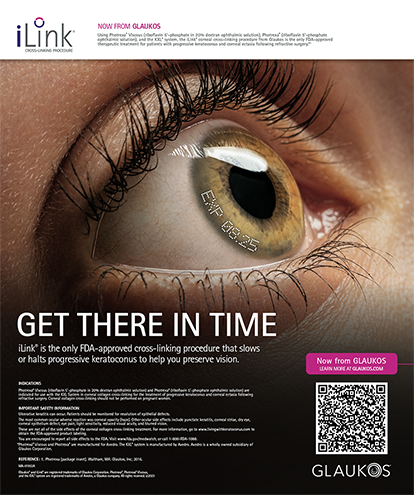Today's Practice | Aug 2005
Increasing Practices’ Perceived Value
How to convert more office visits to surgery.
Michael W. Malley
Sometimes, you truly cannot see the forest for the trees. So when several of my clients indicated they were having trouble converting new patient office visits to paid evaluations or surgery, I decided to spend a little time in the woods … metaphorically speaking.
Instead of a few days of solitude and soul-searching among the Redwoods, I decided to do what most veterans in the ophthalmic industry would probably consider an absolute waste of time: I sat patiently in dark lanes across the country listening to surgeons and LASIK counselors engage in LASIK evaluations, consultations, and general office visits. You can only imagine how unenlightening this process can be when performed countless times per day for weeks on end.
I soon began to feel tortured and annoyed by the repetitive nature of this process. And then it hit me. Suddenly, I realized what virtually every practice, doctor, LASIK counselor, technician, telephone operative, and front-office staff person was doing wrong (or, “forgetting to do,” if we're being kind). First, let me share what they were doing right.
THE FRONT DESK
Most practices were doing a commendable job of answering their telephones and encouraging prospective patients to visit the office. If this is an area where your practice is suffering, evaluate who is answering the phones and monitor what they are saying. After all, anyone calling your office possesses at least a minimal interest in the products or services you offer. They are calling for more information, and all your staff has to do is tell them the process for getting the information they need.
This article is not meant to be a manual for how the front office should handle inquiries over the phone, but because this activity is such a large part of any successful practice, I think it is important enough to briefly discuss here. Before making any changes in personnel or policy, first decide what you would like to achieve with all new patient inquiries. If the goal is simply to mail out information, then that's what your system should be designed to do, and your staff's telephone scripts should reflect as much.
However, if your goal for every new patient inquiry is to schedule an office visit, then the scripting for staff needs to be entirely different. If office visits are your gauge for the success of your telemarketers, then set up a system that directs patients to an office visit rather than mailed information. When prospective patients are informed early in the inquiry process that there are basically two options for addressing their visual needs at your practice, they are usually more than willing to choose one of them. If they are not given direction early in the opening conversation, prospective patients can quickly raise other questions that lead to a discussion of other options, a transition that can result in a lower percentage of office visits (having too many choices causes confusion). Therefore, when a new patient calls, the receptionist should thank him for his interest and quickly inform him of the two options available for learning more about his vision and your practice.
Option A is a free consultation, which should be offered to those callers who are less knowledgeable about LASIK and need to learn more. Option B is simply to schedule a complete evaluation and is reserved for those callers who have done their research, are committed to undergoing the procedure, and want to know if they are an ideal candidate for LASIK at your practice. If there is no option C offered, the caller is less likely to ask for something other than option A or B.
GET THEM IN THE DOOR
Remember that it's okay to run your practice as a business and maintain specific guidelines for patients interested in refractive surgery. They should understand that the only way to determine whether they are candidates for LASIK is to visit the practice for an examination. If a patient is already sure of his candidacy from visiting another practice, he still needs to undergo wavefront diagnostics and a comprehensive evaluation at your practice so that he understands and appreciate what differentiates yours from the others.
Prospective patients who are unfamiliar with your practice and its guidelines will typically comply with instructions that are delivered in an appropriate tone of voice. Receptionists should assume that every new caller deserves to be seen by you the surgeon because of the competitive advantages you offer over other doctors. Every caller who does not schedule an appointment will go somewhere else (presumably to a practice that does a better job of conveying why the patient should schedule a visit). During my research, I found most practices performing adequately in this department.
OTHER OBSERVATIONS
In addition to their above-average conversion on incoming calls, most practices I visited should be commended for giving an outstanding LASIK consultation or complete evaluation. The technology available today to diagnose and determine a patient's candidacy for vision correction is beyond comprehension for most lay people, and I must say that virtually all of the LASIK counselors and technicians did a notable job of describing their various diagnostic tools and their capabilities.
Last, I commend the LASIK counselors and surgery schedulers who were responsible for signing up patients for refractive surgery. Most performed successfully considering the information and training they possessed.
Therefore, given my above-average ratings for telephone skills, technological competence, and scheduling competence, one would wonder why conversion in the practices I visited was still down. Here's why.
LACK OF COMMUNICATION
Having sat through hours of consultations in four separate practices in three different states with a large number of doctors, LASIK counselors, technicians, front-office staff, and house-cleaning personnel, not once did I hear a single attempt to raise the perceived value of the product or service being presented to the patients. No one ever informed a patient of what made their practice different from any other eye clinic in town. Not once did someone attempt to elevate the status of the doctor, the practice, or the procedures with specific data or unique selling points that would have helped reassure the patients that they had indeed chosen the right facility for their procedure.
I'm not talking about “greenhorns,” as we say here in Texas; those practices that I visited were among the leading centers in their regions. They had some of the most experienced surgeons, the most advanced diagnostic equipment, and in some cases a competitive edge on laser technology. But to the average visiting patient, they were just another eye clinic offering LASIK.
The goal in refractive marketing is quite simple: if your asking price for a particular surgical procedure is the same as (or below) the perceived value of the service, it usually results in a very satisfied patient who feels he is getting an exceptional deal on his procedure. When it comes to elective surgical procedures, everyone wants the best. It's up to you and your staff to make sure they know they're getting it.
It is the staff's responsibility to ensure that each and every patient understands the history, tradition, and capabilities of your doctors and the procedures they offer. Too often, doctors and staff wrongly assume patients know the competitive advantages and unique selling points about their practice. Therefore, every practice must go out of its way to elevate its status during every patient's visit. Here's how.
SELL YOURSELF
In several leading centers, my company has implemented a 4- to 6-minute DVD for every visiting patient to watch in the lane that tells the storied history of the practice and also gets them excited about the technology being offered. We also have the staff introduce the surgeon to every patient and prepare the patient for his upcoming visit. There is a greater impact made by watching a story unfold on screen and then seeing the doctor it features walk into the room than having a technician thank you for coming in and handing you a brochure.
Our goal for these centers is twofold: to raise the perceived value of their products and services and to let every patient know he has made the right choice for his vision-correction needs. One of the hardest challenges practices face is trying to increase their perceived value without sounding boastful. Positive talk about the practice should never be left up to the surgeon and is best done early in a patient's initial visit. If it is not possible for a well-trained staff member to promote the practice verbally with patients, consider sharing your practice's story via DVD or other medium during the first few minutes of their visit. Continue to find ways to let patients know they have come to the right place for their particular eye care needs.
And don't forget, the fall is an awesome time to market your practice once the hot summer months have passed. Happy trails!
Michael W. Malley is President and Founder of the Centre for Refractive Marketing (CRM Marketing Group), an ophthalmic consulting/advertising agency established in 1988 in Houston. Mr. Malley may be reached at (713) 839-0202; mike@refractivemarketing.com.




